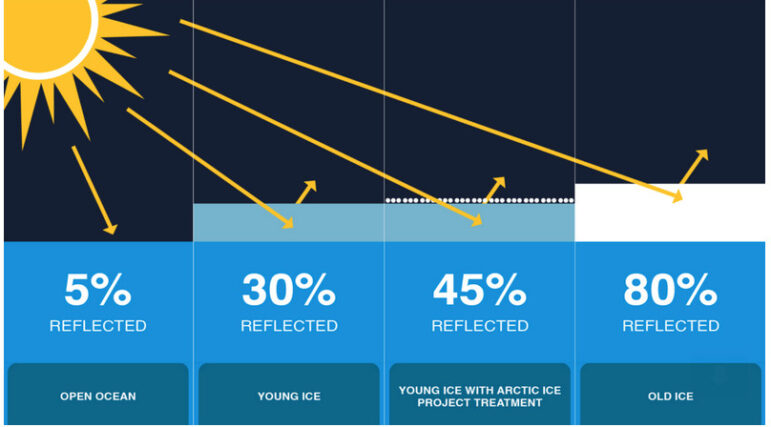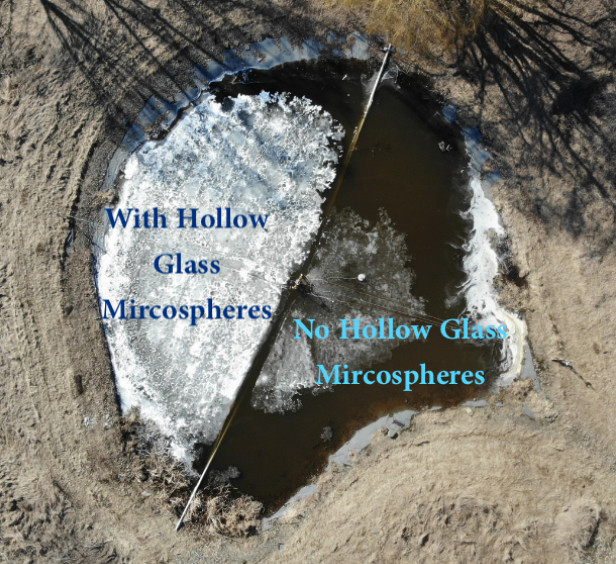Written by Myra Klockenbrink of the Sustainability Committee of the Town of Greenwich
Native son of Greenwich, Robert Moss, is working to restore the planetary heat shield to buy time for nations to stop fossil fuel emissions and begin the work of drawing down carbon — not bad for a 26-year-old Greenwich High School graduate with a degree in Environmental Science from Eckerd College.
Moss took an AP Environmental Science class his senior year at GHS when he realized that even if we stopped emitting greenhouse gases today, that alone would not reverse the worst impacts of a warming climate.
“What we need is to remove carbon from the atmosphere and to do that, we need time to figure it out,” said Moss. “We can plant a trillion trees, but we are still going to be polluting the atmosphere. Until we quit burning fossil fuels and move to clean energy, we are going to need the planetary heat shield, which is the Arctic Ice Sheet.”
The Arctic Ice Sheet functions as a shield against the heat of the sun by reflecting it back out into space.
Sea ice, which is frozen ocean water, forms and melts with the seasons and is typically covered in snow most of the year. As the atmosphere warms more and more of the sea ice melts exposing the dark surface of the ocean. Instead of reflecting the sunlight the open ocean absorbs most of the sunlight. As the ocean heats up Arctic temperatures rise further, creating a feedback loop that threatens to melt the Arctic ice cap.
“At the present rate of melt the Arctic could be ice-free by 2050,” Moss said.
Vanishing sea ice is already responsible for 25 percent of global warming with the Arctic Circle warming three times faster than the rest of the planet. The planet is an interconnected system, and what happens in the Arctic affects the whole of the planet by accelerating global warming, sea level rise and the number and frequency of natural disasters.
“We may not be able to adapt to shifting weather patterns,” says Moss. “Which threatens our food and water security — some regions that traditionally received regular rainfall will not have enough water and other regions will have too much rainfall. It has huge implications for how we manage our resources and our economies.”
That is how the Arctic Ice Project came together to change the current trajectory of the Arctic ice melt. Moss works with a team of scientists, engineers and finance people in developing a stop-gap for global warming that could give economies a chance to move to clean energy and mitigate the risks of climate change while curbing global temperature rise.
The technology developed by founder Dr. Leslie Fields is a form of climate repair that deploys hollow glass microspheres (HGMs) to reflect solar radiation. The white microspheres are made of glass or silica, the most common element on Earth. When they are laid on snow and it melts the glass spheres remain and reflect sunlight, helping to keep the ice from melting. The team estimates that this technology could preserve and regenerate Arctic sea ice, effectively buying time — as much as 15 years — for economies to decarbonize and deal with peak climate risks.

“The Arctic is the planet’s temperature regulator,” says Moss. “With this safe and practical technology we can restore Arctic sea ice and help stabilize global weather patterns.”

The hollow glass spheres, each smaller than a grain of sand, together form a substance not unlike snow, except it does not melt, but in fact, floats. When applied to the ice, HGMs help to keep the ice from melting, increasing their reflectivity, thus protecting the ice underneath from heat and melting.
Research conducted on a lake in Minnesota where HGMs were laid on half the frozen surface and the other half was left with bare ice revealed that the half with bare ice melted, but the half with the HGMs remained in ice.
Below are two photographs illustrating the difference between the ice thickness when HGMs are applied on top of the ice. The images below show how much thicker HGMs keep the ice. This is crucial to ensuring the longevity of the ice’s lifespan.

The Arctic Ice Project is currently testing reflectivity in Utqiagvik, Alaska, and their data shows HGMs placed directly on the ice reflect solar radiation at three times the rate than would otherwise happen if HGMs were not used.
“The Arctic Ice Project is well ahead of any climate repair technology out there,” says Moss. The team hopes to work with SINTEF, Europe’s largest research facility, which would allow them to do research in a controlled environment, effectively testing HGMs in the Arctic without being in the Arctic.
“We haven’t found any hazardous or polluting issues with HGMs,” says Moss. “Largely because they are made of silica, which is not toxic to marine life.” But work with SINTEF would allow HGMs to be certified for use in the international waters along Arctic-bearing nations.
“Restoring ice in strategic areas of the Arctic may be the safest and most effective tool humanity has to stabilize the climate and mitigate risks that humanity cannot surmount,” says Moss. “It literally means the world to me.”
It may mean the world to us too. Learn more at https://www.arcticiceproject.org/